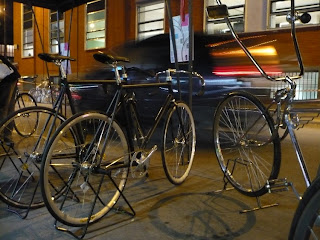 For Thanksgiving this year, I ate no turkey and watched no American football. There were no pumpkin pies cooling in my kitchen, no traditional Quaker hymns sung across generations. I did receive a gift beyond worth when my parents and brother came to visit for a week. We spent our time together in Tuscany, mostly in Florence with a day-trip to Siena. We rambled and ambled, wined and dined, raptured at art and city and captured moments on film. To avoid gluttony of reading and writing, I will try to describe the vacation in installments. Hey, it worked for Dickens and Matthiessen, right?
For Thanksgiving this year, I ate no turkey and watched no American football. There were no pumpkin pies cooling in my kitchen, no traditional Quaker hymns sung across generations. I did receive a gift beyond worth when my parents and brother came to visit for a week. We spent our time together in Tuscany, mostly in Florence with a day-trip to Siena. We rambled and ambled, wined and dined, raptured at art and city and captured moments on film. To avoid gluttony of reading and writing, I will try to describe the vacation in installments. Hey, it worked for Dickens and Matthiessen, right?The Uffizi. A grand palace with an overwhelming collection of art. Countless Adoration of the Magi; innumerable Madonnas, including Madonna of the Pomegranate, the Long-necked Madonna, and a dark 15th century portrait that reminds me now of Munch, found by museum representatives at a flea market in Milan in 2002. I learned about the martyrdoms of various saints: Sebastian killed by arrows, Florian thrown from a bridge with a millstone chained to his neck. Many of the Masters are there: Caravaggio, Botticelli, Raphael, da Vinci, Michelangelo, Giotto, Titian, Dürer... Having now traveled a bit in Italy, I recognize its plants, architecture, and landforms in Renaissance art: who knew that Bethlehem looked just like the Tuscan countryside? At night, the city sparkles along the river and the dome of the cathedral still boggles the mind despite the shadows.
The Accademia. We lucked out and, with the combination of a slower tourist season and an afternoon rainstorm, walked right in without waiting in line. The pen-and-marker graffiti along the wall lining the sidewalk attest to the expectant purgatory of visitors past. The small museum has one room of amazing paintings and another exhibition area of musical instruments from the Medieval and Renaissance periods. However, the gallery’s main attraction is Michelangelo’s David, and rightly so. A few unfinished sculptures precede the David and show some of Michelangelo’s process and genius. The 17-foot tall David is... Giorgio Vasari, Michelangelo's contemporary and biographer, said: "Whoever has seen this work need not trouble to see any other work executed in sculpture, either in our own or other times, by no matter what craftsman." The stone seems more alive than some people I’ve known. I had to remind myself of optical illusions when I saw his chest swell with breath. With tired feet and a curious mind, I was happy to sit and stare for a long time. To think that Michelangelo completed the sculpture by the time he was thirty...











